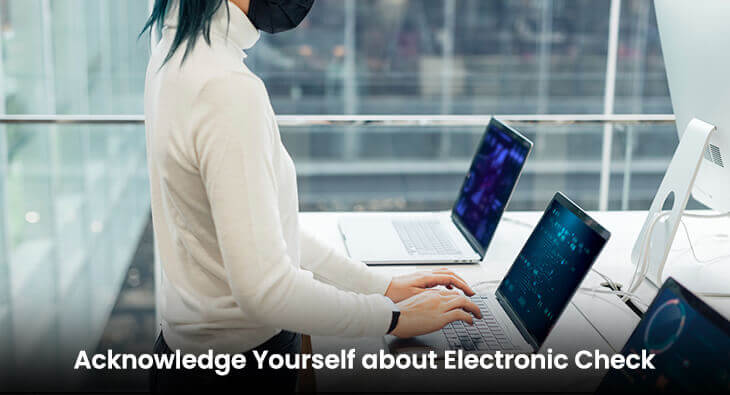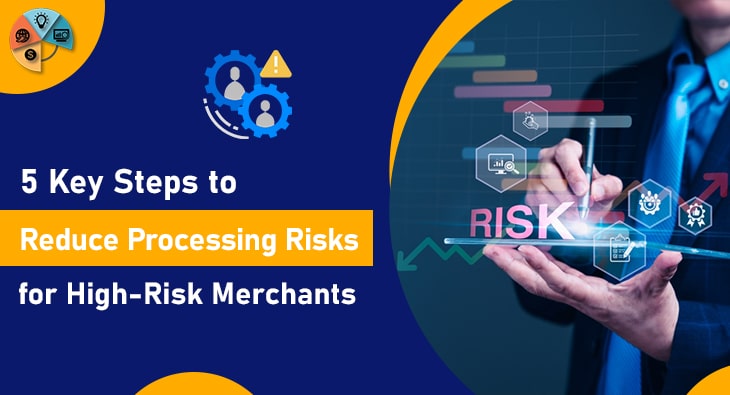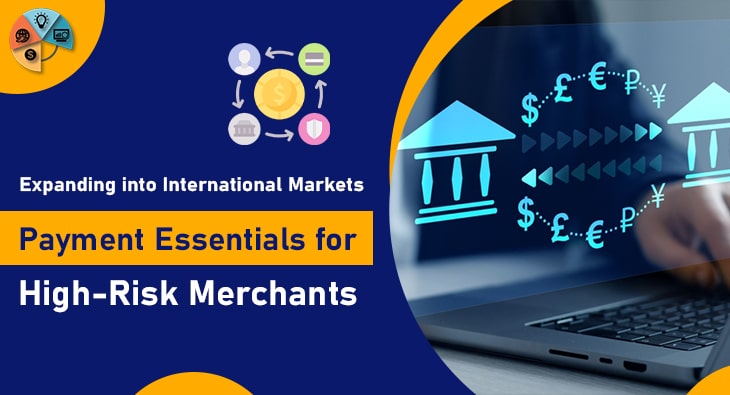While an electronic check may seem like an 80’s rock band than a source of payment, there’s a lot to know here. The probability that you’re familiar with the old school check payment method, a staple dating back many hundreds of years. Long years back, banks use to manually process checks and deposit the money into the user’s bank. The money at times takes days to process and appears in the correct account. Fortunately, technology has jumped and bounds since those days. Now, electronic checks allow these payments to be made electronically from a person’s checking account. There are many perks for both parties when utilizing the eCheck payment method.
But what is an electronic check?
Electronic Check Introduction
An electronic check, or eCheck, is an electronic payment made from your checking account. Think of an electronic check as a digital replica of your paper check. When a customer utilizes an eCheck as their method of payment, the funds travel to the merchant’s bank account Automated Clearing House (ACH) network.
Merchants must have eCheck processing to enable these sorts of transactions.
Working on eCheck Processing
Electronic check processing is an instant way to process payments as compared to the traditional paper check method. The process is indistinguishable from paper checks. Jumping to electronic check processing, allows businesses to process digital payments, saving time and deducting paper waste. There are a few important steps to processing an electronic check.
The Transaction Is Approved
The initial step to processing an eCheck transaction is that the business must acquire the customer’s authorization to grasp the funds from their account. This authorization can take place through the customer filling out a credit card authorization form, phone conversation, or attested order form. Once authorization takes place, the check information travels to the payment processor.
The payment goes through
After gaining authorization from the customer, the business can launch the payment information. This involves the customer’s bank routing number. This data goes into your online payment processing software. Here, you’ll also have recurring payment information if it’s important. After uploading the information into the software, the business will cave in to start the ACH payment process.
Funds Pop up
The payment is ending automatically from the customer’s bank account. Then, the software makes a receipt and forwards it to the customer. Funds should appear in the business’s bank account between three to five business days after starting the ACH transaction. Since the funds are in the correct place, this also marks the conclusion of the electronic check process.
The time calculation for an eCheck to clear the Bank?
On average if we talk, it takes 3-5 business days for an electronic check to clear the bank. This states, that once the first transaction is initiated and verified, it will approximately take 3-5 days to clear and reflect in your bank account. However, this is not the complete picture when it comes to the clear eCheck processing on time.
Altogether, the time it takes for an eCheck to be processed relay’s on the provider and issuing bank. Because there are many institutions involved, this processing time goes through many channels.
eCheck Estimated Completion
As discussed, eCheck processing times are estimated as several factors that need to think before giving a perfect timeline. Some of these factors include:
- Your processor
- The issuing bank/institution
- Holidays
- The time the transaction was initiated
With these factors in mind, it takes roughly 24-48 hours for the verification of an eCheck to take place following the transaction being commenced. This process is when the credentials are approved and the issuing bank is given the green light to take out the funds. From this point, it will take more than 3-5 days for the electronic check to clear the bank. Once this happens, the funds will be deposited in the appropriate bank account and the transaction is finished.
Method to pay with eCheck Online
Using the strength of eChecks to pay online is helpful for many reasons. For one, they shrink the cost of high-volume payments and make recurring payments a blow. But you may be thinking about how to pay with eCheck online if you’re an entrepreneur.
Relying on who you’re seeing to pay via electronic check, you will most likely get some sort of an invoice for the goods or services you’re paying reimbursing for. On this eCheck invoice, you will write your banking details. The most common details required include:
- Your name or business’s name (DBA)
- The bank account number which will be drawn from
- Applicable routing numbers
- The name of the issuing bank
Once this information is given to the related party, the online eCheck will be commenced. As highlighted before, this process can take up to 7 days with verification and proper approvals, and bank clearing. This method of paying online via eCheck decreases the use of credit cards and terminals, making payments more approachable for both parties.
What Sort of Payments Can You Make with eChecks?
The most famously utilized payment method in the United States is credit cards. But eChecks are also a popular method of payment among every age group. eCheck merchant processing fees are often less than credit card processing fees, making it a charismatic payment option. eCommerce and subscription or recurring revenue business models are the most common users of eCheck payments. However, almost any business that takes digital payments can get an advantage from accepting eCheck.
eCommerce
It is easy and popular to have eCheck as an accepted form of payment for an eCommerce website. Because eChecks permits merchants to process digital payments, there are customers who may choose it over using a debit or credit card.
If a customer doesn’t have enough funds to process a payment, the transaction simply won’t take place. You do not take a chance of having to pay a return check fee. It’s a secure way to accept international transactions. There’s also no limitation to the monetary amount that an eCheck can be for. If you run online stores that sell expensive products, you can choose this method of payment more efficiently.
Subscription/recurring revenue
If your business is subscription-based or recurring revenue model in nature, eChecks make an ideal form of payment. These are also sometimes known as “recurring ACH payments.” It is common for property managers to request that tenants fill out a recurring eCheck rent payment form. This allows them to deduct rent auto-generate on a specific day each month from the tenant’s checking account.
Other common places where electronic checks work for recurring payments include the following.
- Gym memberships
- Mortgage payments
- Credit card payments
- Auto loan payments
How to Encash an eCheck
Because eChecks are fundamentally virtual versions of your traditional paper check, it’s very smooth and easy to deposit them. Simply move ahead as you would with any digital payment. The only difference from other online payments is that you’re requesting funds to be paid straight to your business bank account.
eCheck Deposits
If you’re thinking about how to deposit an eCheck, you’re in the correct place. While an eCheck deposit may sound illogical, this process deserves an explanation.
eCheck deposits happen when a person or an organization takes the banking details provided to them and starts an electronic payment. A transaction then takes birth between the issuing bank and the processor. Depending on the service your organization uses, an eCheck can be deposited through a secure electronic payment gateway. Here, the user gives the information directly and submits it for payment.
With the various situations and contracting opportunities, it would be a bit difficult to come out unmoved by all of the experiences that naturally come your way with a bit of every contract. Especially at the initial of your contracting career, you will learn an amazing deal about business, your skills, and how your skills are applied to the tech industry. Each contracting opportunity will eventually help you sharpen in on the exact area you’d like to exist in.
Likewise, if you’re a business owner who is interested to hire a contractor for the very first time, there can be a definite learning role that comes into play. Tech is an inherently bit vague industry to penetrate for the average Joe Schmo. Combine that uncertainty with the freshness of going from an hourly or salaried employee to a contracted one. You now have a whole lot of anxiety for things to go well. But like any new experience, it will be something to learn from, if not a teaching moment.
You’re Free Soul
An advantage to the job that goes hand in hand with the flexibility aspect of being a free agent is how independent you will be in this position. Keeping aside from your contractor, you will work independently mentally often at home without coworkers around you with very flexible timings. This is a huge shock for those who are used to constant feedback. Others don’t acknowledge the closeness of others in the workplace.

Email us anytime!
Email customer service 24/7

Call us anytime!
Reach customer care 24/7 at +1 (727) 330-3944
After a certain amount of time, the funds will be set down in your account electronically. eCheck deposits are a quick and more safe and secure form of digital payment than any other virtual choices out there.
Do ACH and EFT Come Under Electronic Check Processing?
The answer is absolute yes, in essence. Both ACH and EFT payments are types of electronic payments. Electronic Funds Transfer, or EFT, is the procedure of moving funds from one bank to another electronically without requiring bank employees. The transfer can happen completely online without the need for paper money.
EFT is a big term that includes many various types of electronic payments including wire transfers and ACH transfers. Because transactions occur completely online, EFTs are also sometimes called ePayments. It would be more perfect to say that electronic check processing comes under EFT.
ACH payments, which are also named electronic checks or eChecks, are a form of EFT payment. This method triggers funds between accounts electronically without the requirement for stamps, envelopes, and checkbooks. The major difference is how ACH payments utilize a batch processing method. Transactions are usually seen one at a time with checks or wire transfers.
Are Electronic Checks Safe?
One of the main benefits of electronic checks is that they are a safe payment method. Data and security infringement are unfortunately a common occurrence in today’s world. However, electronic checks provide more security than using a tangible check. This is because the use of eChecks gets rid of the tangible document from the transaction. There’s nothing that can be misplaced or robbed that can be used to commit fraud or know the theft.
The more layers of authentication through the payment process put layers of security that cover both parties. The encrypted data give a secure online payment that you can feel confident in.
Method to Get a Merchant Account for Electronic Check Payment Processing
To complete electronic check payments, you will require a merchant account. This process is simple to understand and identical to acquiring payment processing for credit card payments. Nevertheless, if your business comes under high risk it is important to look for a merchant provider who knows your industry. When authorized, your merchant services provider will come to you by setting up eCheck payments for your business. And it’s simple as that.
Keeping your electronic check payment processing safe for your business is an amazing way to provide other payment methods as well as security and high-ticket transactions. With the appropriate processor, you’ll be processing checks in less time.


